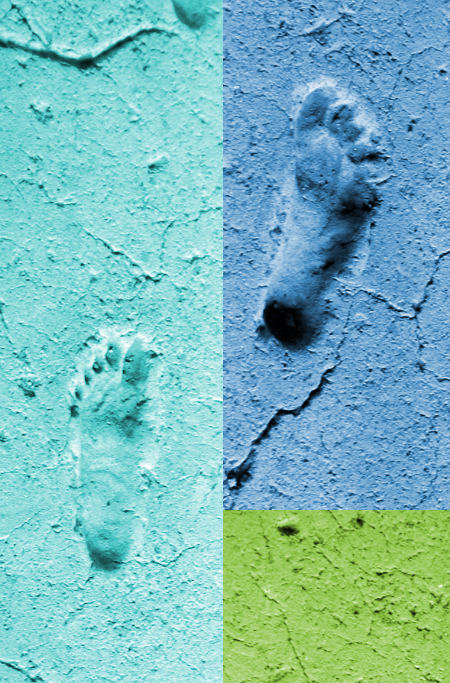Footprints show ancient occupation
 Fossil footprints have pushed back the date of human occupation in North America.
Fossil footprints have pushed back the date of human occupation in North America.
Newly-discovered fossil human footprints embedded in an ancient lakebed show that humans inhabited North America during the Last Glacial Maximum (LGM), occupying the region of what is now White Sands National Park in New Mexico, United States, between 23 and 21 thousand years ago.
Analysis suggests the footprints were created mostly by children, teenagers and the occasional adult walking through soft mud beside an ancient lake.
Researchers from the US Geological Survey have dated the tracks using radiocarbon dating.
They were found alongside tracks of mammoth, giant ground sloth, dire wolves and birds, according to research published by Bournemouth University.
“It is an important site because of all of the trackways we've found there show an interaction of humans in the landscape alongside extinct animals like mammoths and giant sloths,” says Dr Sally Reynolds, the university's Principal Academic in Hominin Paleoecology.
“We can see the co-existence between humans and animals on the site as a whole, and by being able to accurately date these footprints, we’re building a greater picture of the landscape.”
Before this finding, the best evidence suggested humans only travelled south into the Americas when ice barriers began to melt less than 16,500 years ago.
It now appears that humans were present in the southern part of North America before the last glacial peak.
The thousands of fossil footprints at White Sands also suggested humans made repeated visits to the site over at least two millennia.
The finding may add weight to the theory that Chiquihuite Cave in Mexico was occupied by humans around 30,000 years ago.
This theory is based on stone tools found in the caves, which are much more difficult to date.
Stone tools can move between layers of sediment and rock, but fossil footprints cannot. Unlike cultural artifacts or other evidence of human activity, which can have uncertain provenance, footprints have a primary depositional context, fixed on the imprinted surface, and represent a discrete moment in time.







 Print
Print